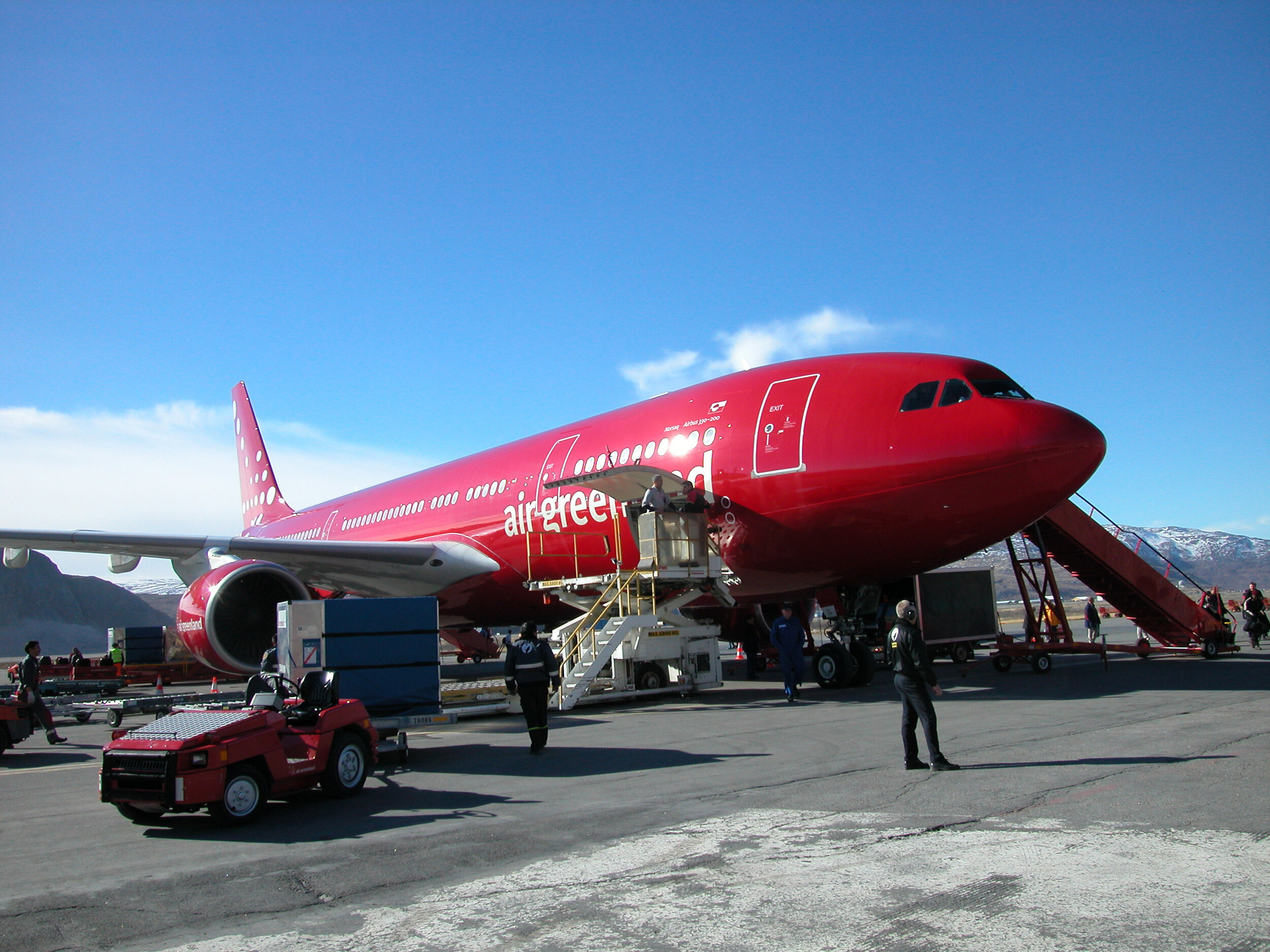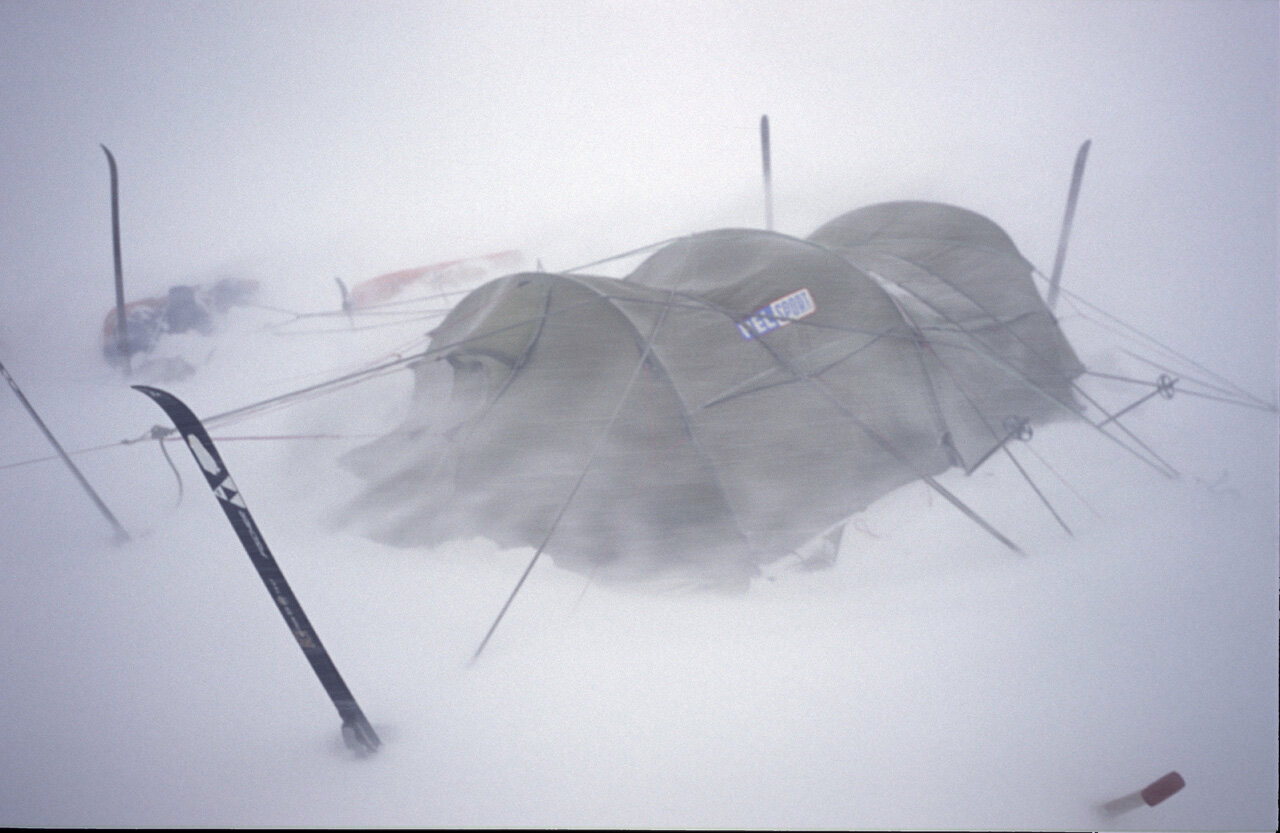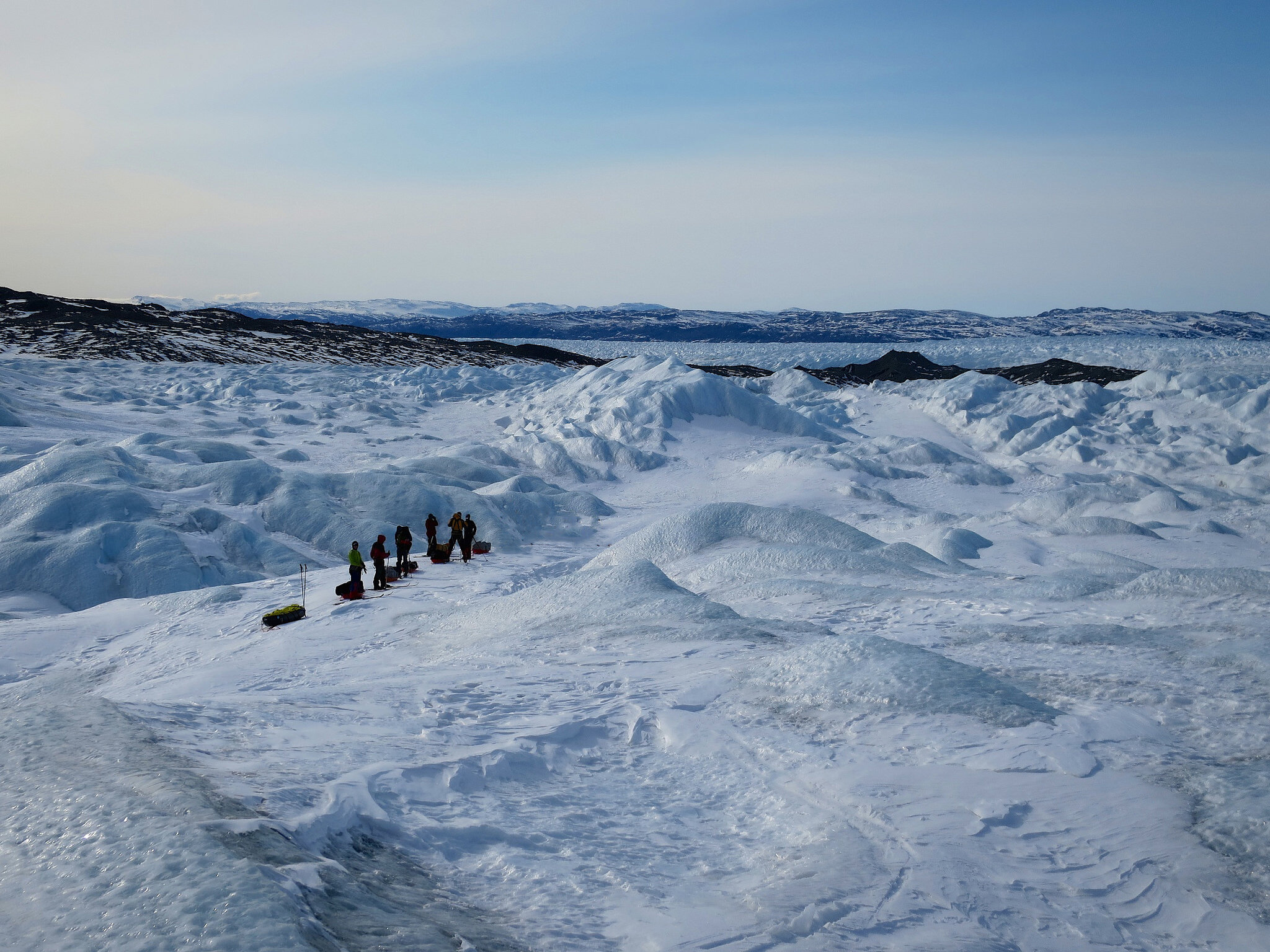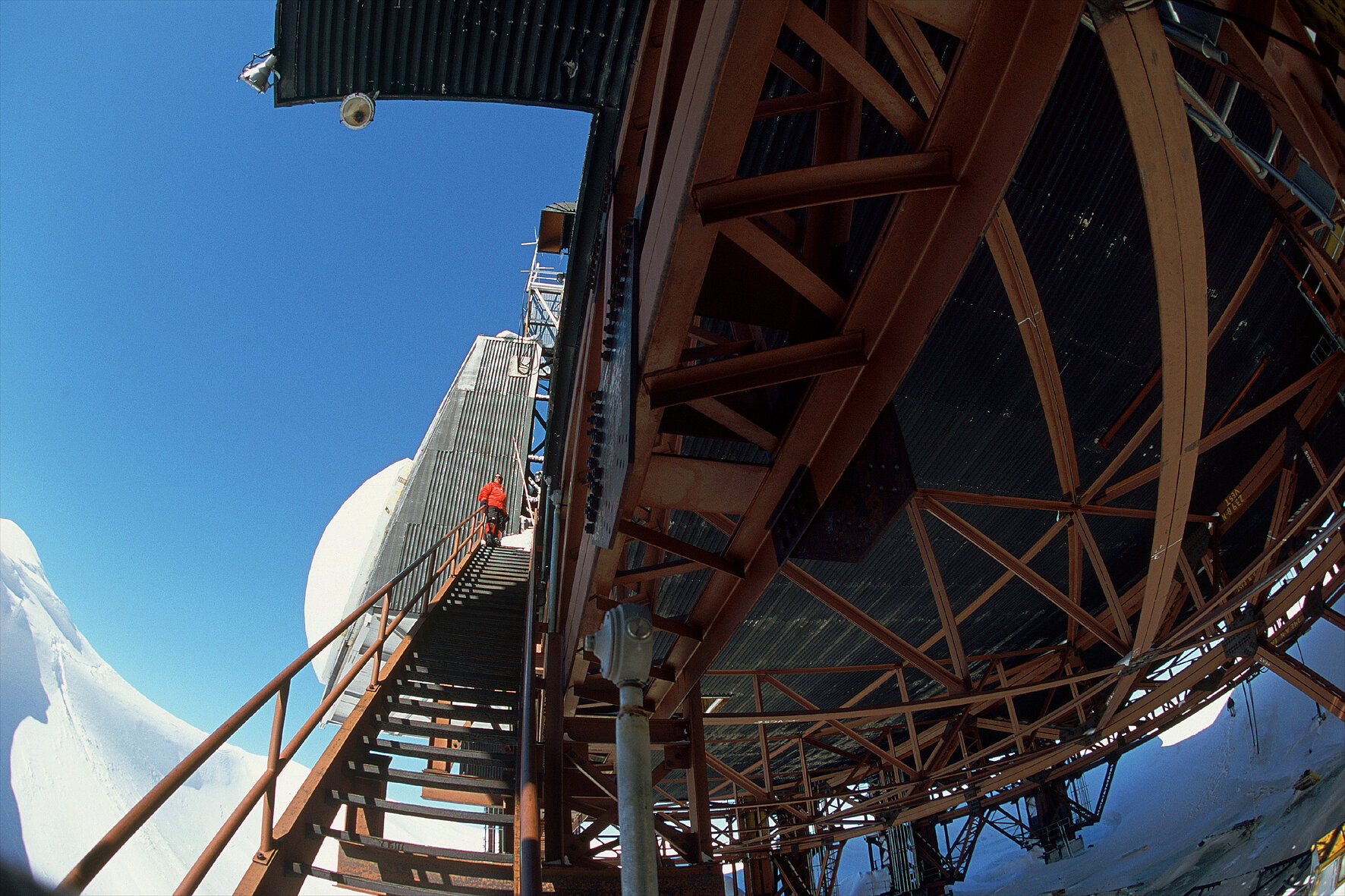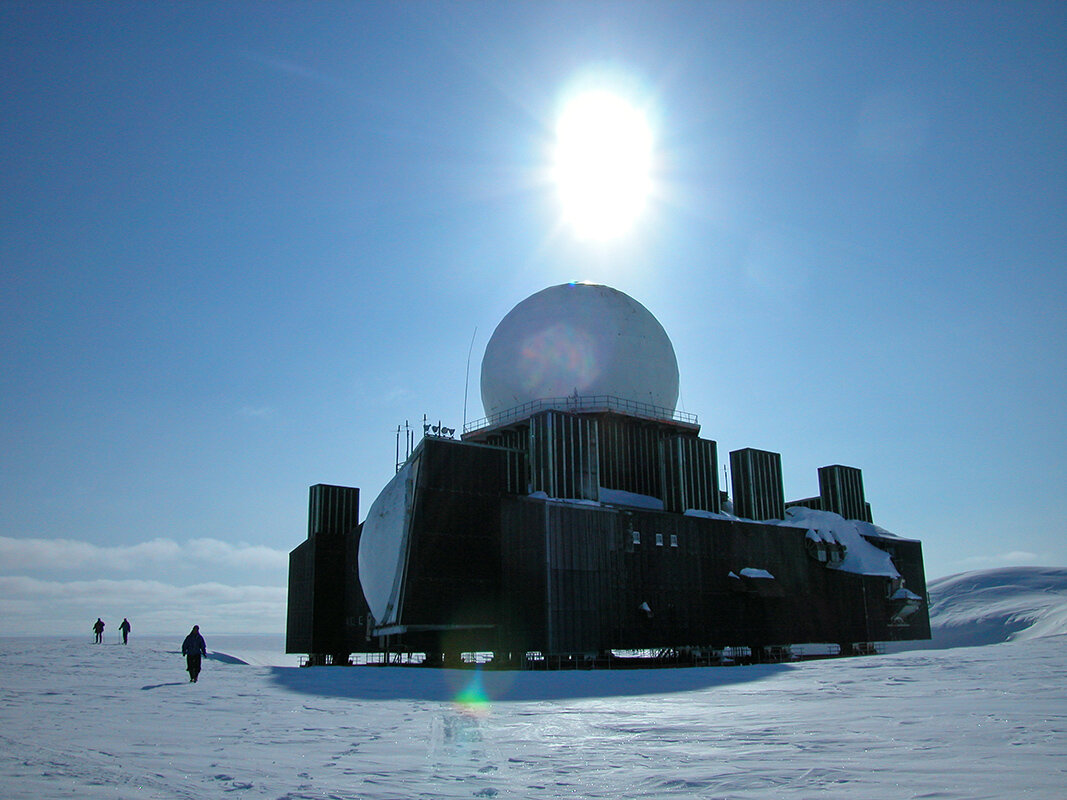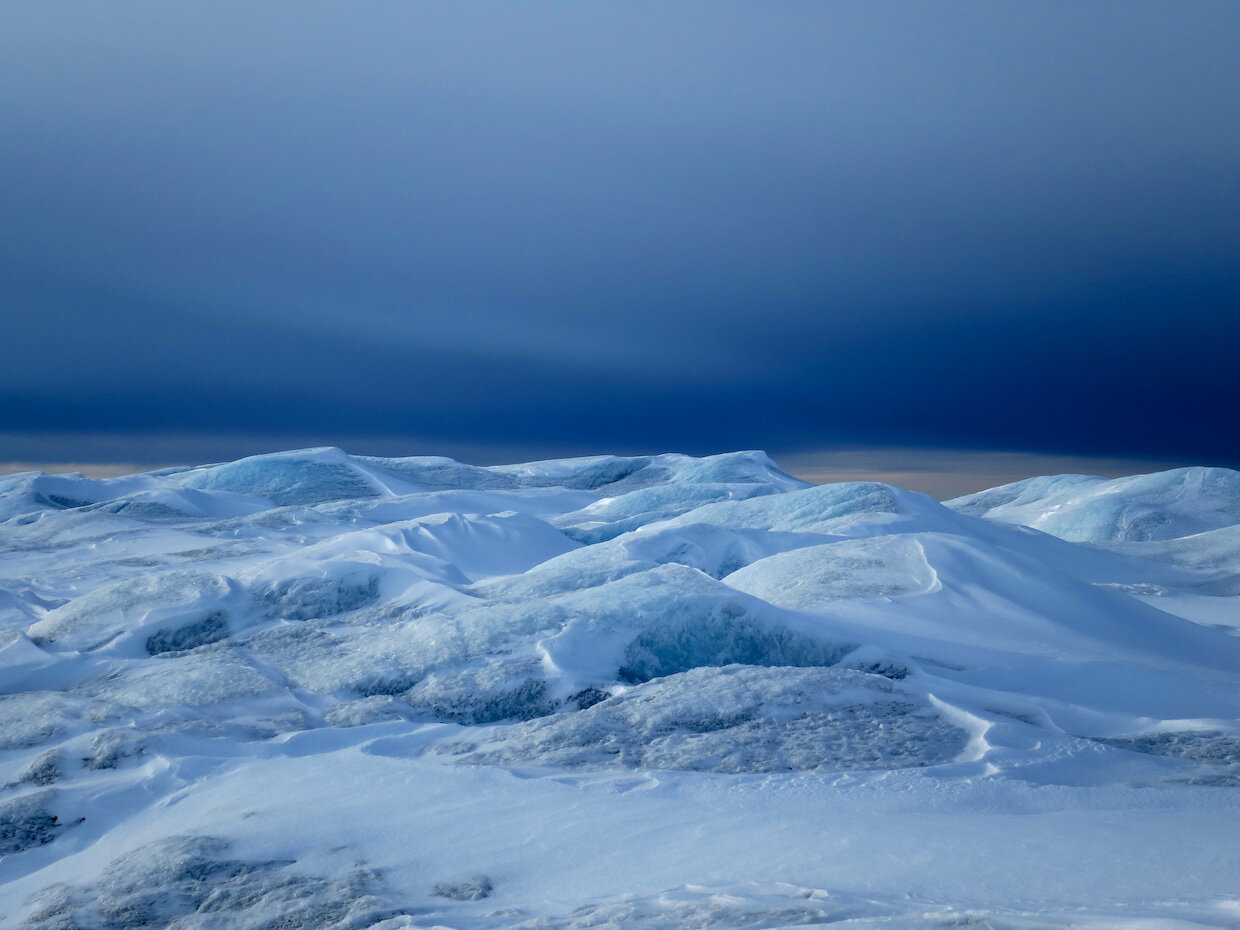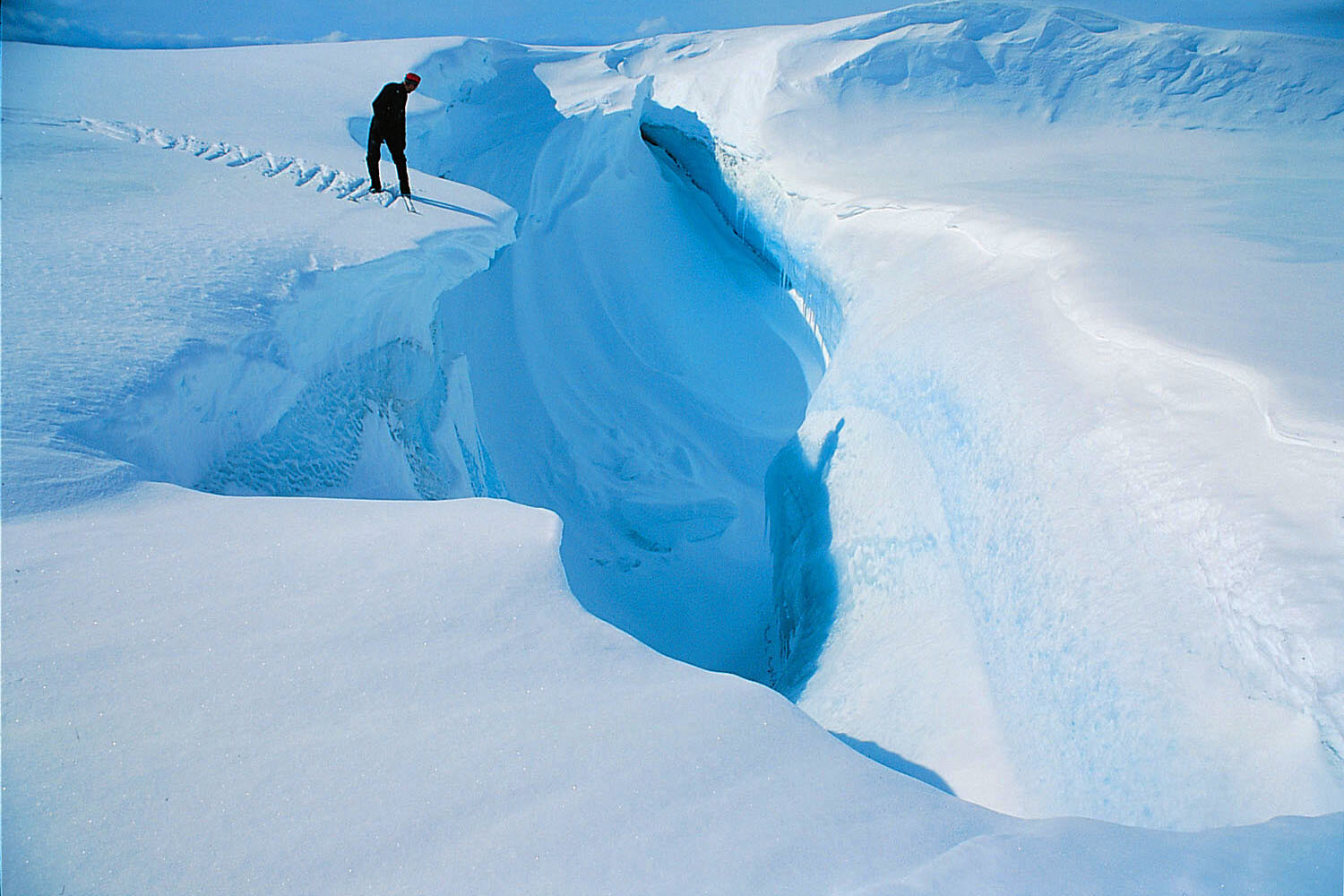greenland Classic
From West to East in May
THE CROSSING OF A LIFETIME
The West to East crossing of the mighty Greenland Icecap has become what is the logic norm. There are reasons for this: Logistically, it is perfect as Kangerlussuaq is close to the ice; you know when you'll start and leave out weather uncertainties. A start in May also means you go with the weather, seasons, and melting, hopefully (!) avoiding the worst weather and too much meltwater in the western icefall. You even arrive on the East Coast after the feared Piteraq (huge fall winds) season has ended. And we must admit, to end at the stunning east coast among icefalls, nunataks and icebergs is a real goosebump experience!
With it’s challenging Icefalls, vast planes, surprising altitude and changeable conditions, this trip will give you lots of experience, happiness, an insight into the importance of teamwork and maybe even tidy up the inside of yourself.
- Stepping off the ice and onto land, after 3-4 weeks endurance, you know you will remember this for the rest of your life!
MEETUP: 30.04.25
PRICE 12.100 €
DURATION: 26-28 DAYS
• Is set for about the same time every year
• Prices may rise FOR 2025?
• Expect 1 leader and 6 participants per team
• Is set for about the same time every year
• Date above is approximate meetup date
• Duration: ca. 26-28 days on ice + travel
Expedition details
We gather in Kangerlussuaq at the west coast. The next day and a half we do the last preparations and packing, before being driven to the edge of the ice. To see the mighty Icecap is a huge thrill and after the last adjustments, we throw ourselves at the mercy of the icefall. The conditions depend greatly on the amount of snowfall during the winter. With little snow, it can be a fun struggle to get ourselves onto proper snow for skiing.
We will be out of the Icefall after some 3-4 days and then onto the rolling ice-dunes that take us ever higher and towards the plateau. After 9 days (approximately) we reach the abandoned ‘Early Warning Radar Station’; DYE II. Not pretty, but a reminder of the Cold war and by now a historic Icecap relic that slowly is being buried in the snow.
From here we have a marvellous, and perfect snowfield that really gives a superb feeling of vastness and calm. When ¾ of the distance is covered we pass over the highest point on the route called the ‘Summit’. This long shoulder stretch out in a south-north direction, and marks the entry to the eastern side of the icecap. With that the wind should start coming in from behind. These katabatic winds consist of cold air flowing from the higher areas and down towards the ‘warm’ sea, where the warm air rises and with that sucks the cold air down, - sometimes in a violent fashion.
With these winds in the back and the terrain starting to drop, the last days will be a real treat as the distances almost double before the first Nunataks start showing on the horizon. An immense feeling of joy keeps building as more mountains appear and eventually – the ocean, littered with icebergs, come into view.
On the last leg, we need full focus as we tread our way safely off the ice and onto the fjord and follow the thin ice until the edge. There we are picked up by boat and taken to Isortoq.
Isortoq is a small and very ‘authentic‘ fishing and hunting village. It is the perfect way to round off our acquaintance with the wild Greenland as we start to digest the experience and all the impressions from this truly unique world.
Heading back homewards we will have to fly to Tasiilaq, the ‘Capital’ of the East-Greenland’, for and a good meal and a night, before helicoptering over to Kulusuk and flying home either via Iceland or Copenhagen.
Day by day
Day 1: The Air Greenland flight from Copenhagen takes off around 9am and lands in Kangerlussuaq on the Greenland West coast 09:40 – the time zone 4 hours after Scandinavian time.
We use the day for buying the last bits, packing and preparing. We believe it is essential that everybody take part to better understand how an expedition works. Sometime we even stay for another day to get both logisticaly and mentally ready!
When we are ready we will be having a last big meal in a restaurant :-)
fase 1:
Day 2: We finish packing and change into the expedition clothing that will stay on for the next 3+ weeks. Then we put the clean “civilian” clothes in the mail to be sent to the other side and take lunch. Right after lunch we drive to the Height 660 (Høyde 660) at the foot of the icecap. Depending on the time of the day, we either camp for the night and arrange the sledges etc, or we do the first kilometres to get the feel for the challenge.
Day 3-4 (approx): For the first days we need to keep an open mind. The state of the Icefall depends totally on the amount of snow that fell during the winter and the weather. This area can be almost desert-like when it comes to precipitation, and years with very little snowfall will result in a wild and exposed ice field (but very picturesque). That means crampons, lots of up and down and a pretty tough struggle to reach the snow and getting on the skis. With lots of snow, we can put on skis right away and do good distances from the first day. Whatever happens, this part is very beautiful and you will (if you are in shape) enjoy it tremendously.
fase 2:
Day 5-9: As we break out of the lower (and wildest) part of the icefall, the landscape transforms into big rolling hills that rapidly gain altitude. After another day or two we are out of the icefall and break off easterly as we aim for DYE II. The terrain continues to rise, but slowly the landscape flattens out and we can enjoy the Plateau. It is still hard work and our bodies are starting to feel the workload.
Day 10 (or 11?): If the weather is good, DYE II will show at the horizon some 25-27km away. That makes navigation very much easier. As we get there we camp and enjoy a very well deserved rest day. Apart from having a look at the monstrous relic from the cold war, we go over the equipment, sleep, eat and drink.
fase 3:
Day 12-18: As we leave DYE II we move into the flattest par of the journey. These plains here are beautiful, and we do great distances as our bodies respond to the break. But we do still gain altitude as we are still some 5-600 metres from the highest point. That is called the ‘Summit’ and is a long and rounded ridge going in south-north direction up Greenland. As we get near, the wind and the weather may be a bit undecided before we finally start feeling that the wind hits us from behind! Then we know we are on the home stretch.
fase 4:
Day 19-24. The first day we may only descend 50 metres. But soon we descend at a higher rate, and as the wind pushes from behind the distances increase. These days are a strange feeling of wanting to get to the end and not wanting this wonderful experience to end.
We stare at the horizon and we all agree the first to spot land will get a price as we feel every bit like Columbus (or maybe more like Nansen). To our surprise (or maybe you should not read his) the first peak pops up on our right! But as we break into the icefall, more nunataks come into view in front of us. As we zigzag down we first see mountains, then the ocean, then the icebergs littering the sea before we see real land!
Pushing hard we hit the first moraine as we stretch the day - and some hours later we are down by the fjord.
Day 25-27. Depending on what time of the day we get down (if it is very late we camp) we follow the sea-ice out the fjord. As the ice ends, we wait for an Inuit to come and pick us up by boat and soon we are in the tiny (but very authentic) hunting and fishing village of Isortoq. Here we stay in the ‘Service House’ and visit the store. Food is then the only thing on the agenda – apart from going around and taking photos.
heading home fase:
The next day we fly by helicopter to Tasiilaq.
Tasiilaq is a very picturesque town and the ‘capital’ of the east coast. Here we (hopefully) get our clean clothes from the mail, shower and enjoy big lunches, bigger dinners and huge evenings…
The next day (or day after - we recommend a stay over just in case...) we fly out early in a helicopter over to Kulusuk and the airport there. From there most of us will fly over to Iceland and home after a night in Reykjavik, while another option is to fly back over the ice to Kangerlussuaq and home via Copenhagen (either way letting the adventure sink in and – pondering where to go next ?)
the price:
• The final price depend on when you book, confirm and send final payment. The later this nis the harder and more complicated all our logistics get (permits, team composition, guides, equipment to buy and send, etc.), so rates are:
Trip paid in full before 1st November: TBA€
Paid 1st November to 20th January: TBA€
Trip paid in full after 20th January: TBA€
• In any case, the expedition fee must be paid in full no later than 90+ days before departure (minus the already paid deposit)
• The price for 2025 and onwards is not set, but take a 3-5% increase into account to be on the safe side for following years
The Deposit / signing up:
The sooner you sign up and commit, the longer you will have to prepare. We see this as essential, and we both get to know each other, and can build the team around you guide.
The system works as follows:
• Your Booking Form will give you a place in the ‘queue’. It is not binding in any way. It only gets serious as you receive a Deposit Invoice (1.800 -Euro) Once paid your place is guaranteed and you are on !
• We will send you our final invoice approximately 6 months before departure or later if you book late. As detailed above.
• The deposit is non refundable according to our Travel conditions.
What is included:
We do all paperwork and cover the fees (applications, permits for the crossing, radio / communication, weapons) and pay a Search & Rescue insurance in case the WHOLE team needs evacuation;
We will supply: food, sledges, tents, stoves, fuel, safety equipment like Iridium satellite phone, emergency beacon, VHF radio, GPSs, maps and waypoints; We are responsible for the medical bag, spares and rep bag + a training weekend - and we answer to every question you may have.
What is not included:
You bring your own personal clothing, skis, boots and poles, sleeping bag, mattress and stuff-bags, toileteries, thermos, drinkbottles, cuttlery, skin and face protection, books, camera etc.
• You choose and pay your own flights and pay for board and lodging during the days right before and after the ice, and training weekend.
• You must have your own travel / cancellation / medical evacuation insurance in case of personal accidents or injuries.
• If you have food allergies, intolerance, etc you may be asked to contribute and help build up your food rations so that we can be sure you have enough, safe and high quality food.
• Any unforeseen delays or change of plan by the group may also result in extra cost. We recommend return tickets that can be changed.
All payment and deposit details subject and according to our travel terms and conditions.



